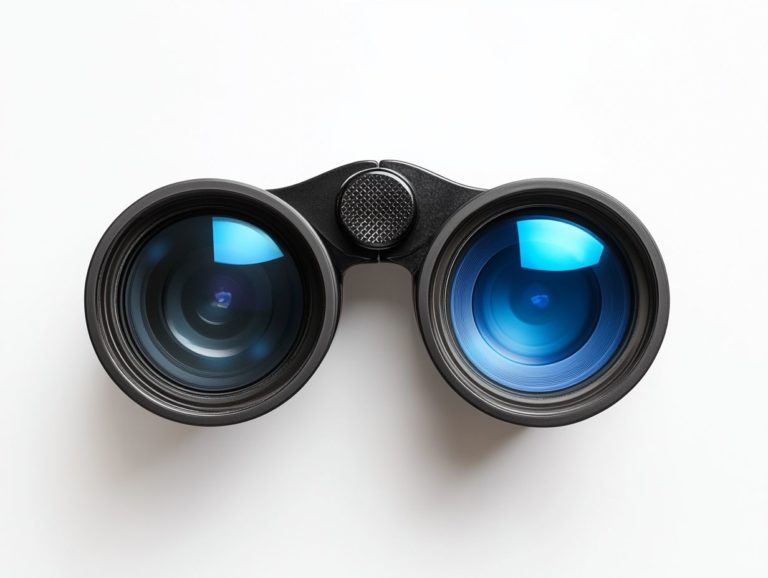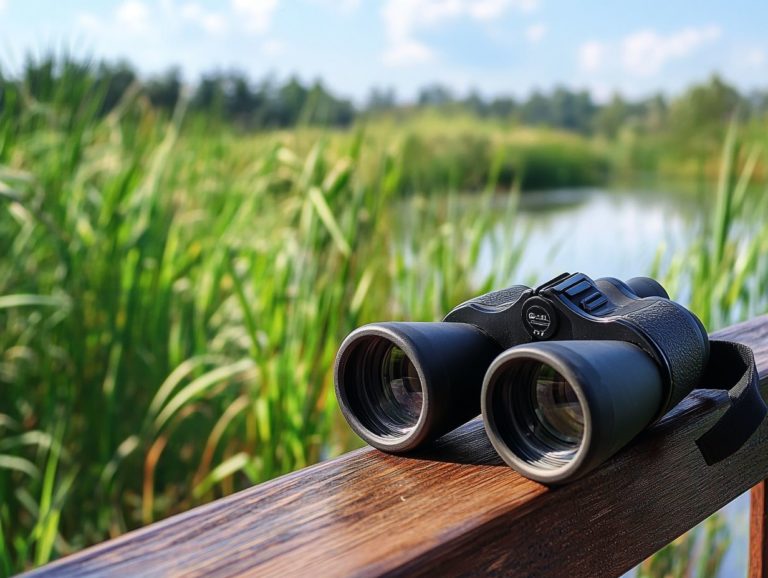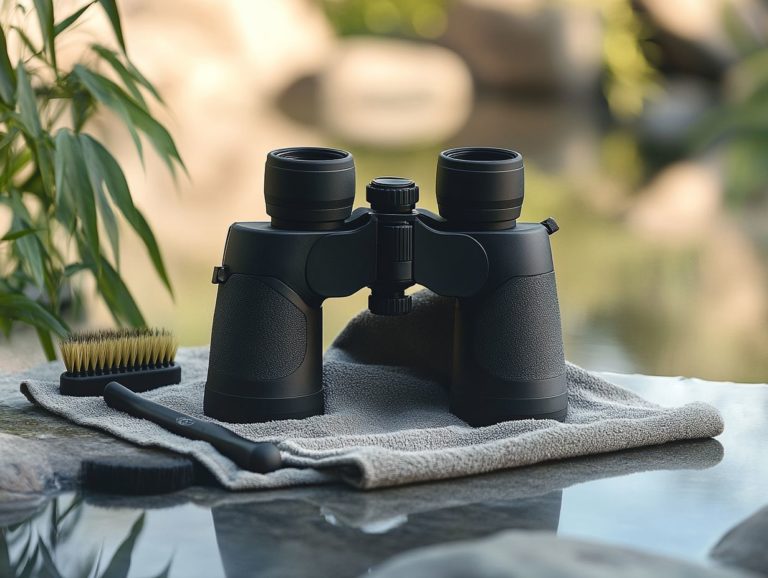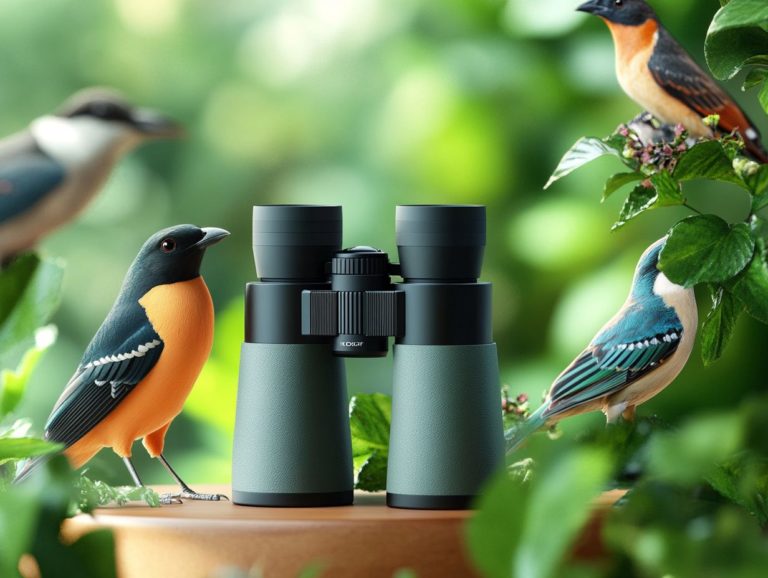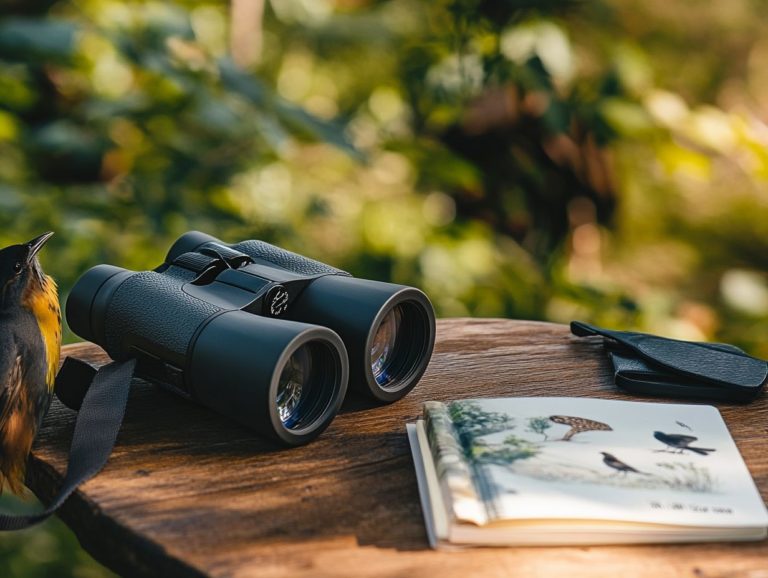Comparing Porro vs. Roof Prism Binoculars
When selecting binoculars, grasping the type of prisms they employ is essential for maximizing their performance.
This guide delves into the two primary designs: Porro and Roof prisms. It highlights their respective advantages and disadvantages, examines key differences in optical performance and design, and offers valuable insights to assist you in choosing the ideal pair tailored to your needs.
Whether you’re a passionate nature enthusiast or a casual observer, this information equips you to make a well-informed decision.
Contents
- Key Takeaways:
- Understanding Binocular Prisms
- Advantages and Disadvantages of Porro Prism Binoculars
- Advantages and Disadvantages of Roof Prism Binoculars
- Key Differences Between Porro and Roof Prism Binoculars
- Choosing the Right Binoculars for Your Needs
- Frequently Asked Questions
- What are the main differences between Porro and Roof Prism binoculars?
- Which type of binoculars is better for low light conditions, considering the optical path and light transmission?
- Are Porro prism binoculars more affordable than Roof Prism binoculars?
- Which type of binoculars is better for long-distance viewing?
- What are the advantages of Porro prism binoculars?
- Which type of binoculars is better for bird watching?
Key Takeaways:
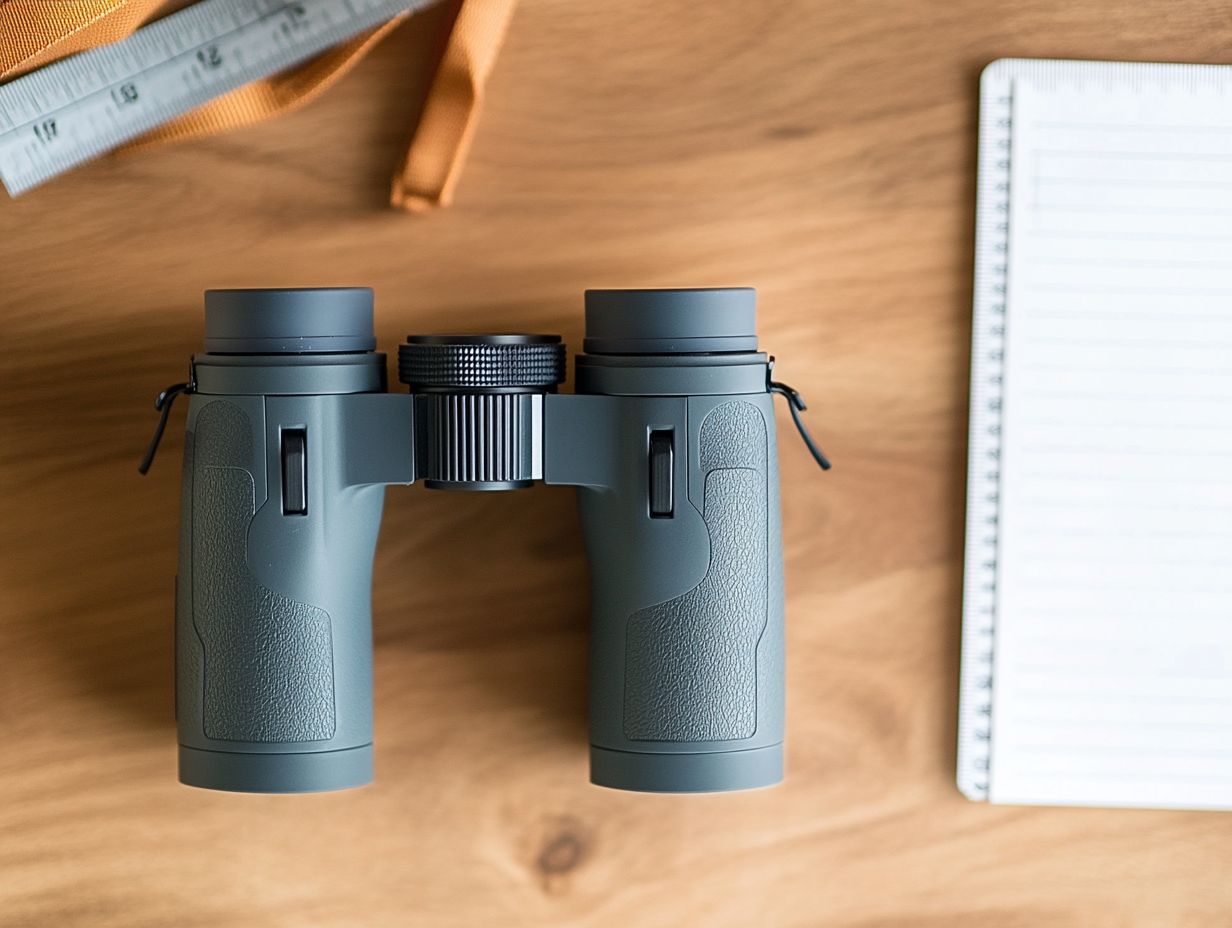
- Porro prisms offer a wider field of view and better depth perception. They are ideal for activities like bird watching and sports.
- Roof prisms have a more compact and streamlined design. This makes them easier to carry and handle for activities like hiking and hunting.
- When choosing between Porro and Roof prism binoculars, consider your specific needs and activities to determine which design will provide the best optical performance and comfort for you.
Understanding Binocular Prisms
Understanding binocular prisms is essential for anyone keen on optical instruments, whether you’re birdwatching, traveling, or simply soaking in the scenery. The two main types of prisms you ll encounter are the Porro prism and the roof prism.
Each offers distinct optical paths and benefits that can significantly influence your viewing experience.
Thanks to advances in optics technology, these prisms have been carefully designed to enhance light transmission and image quality. Key materials like BK-7 and BAK-4 prism glass are important for the performance and optical excellence of your binoculars.
What are Porro and Roof Prisms?
Porro prisms and roof prisms showcase two distinct approaches in binocular technology. Each brings its own set of advantages and challenges when it comes to optical quality and compact design.
The structural nuances between these prism types significantly influence your experience of the world. Porro prisms give a wider field of view. They also enhance depth perception with their offset eyepieces.
In contrast, roof prisms present a sleek, compact profile, making them an ideal companion for those on the go. This compact design appeals to bird watchers and travelers. Portability is key for on-the-go adventures.
However, it s important to note that roof prisms might compromise a bit on image quality compared to Porro prisms, especially at longer distances.
Ultimately, your decision between these two designs will depend on your personal preferences and how you plan to use the binoculars. Consider factors like depth perception and clarity in various viewing conditions to find the perfect match for your needs.
Advantages and Disadvantages of Porro Prism Binoculars
Porro prism binoculars are renowned for their exceptional optical quality, offering you a distinctive viewing experience. They seamlessly blend affordability with outstanding performance, making them a favored choice for nature enthusiasts.
Pros and Cons of Porro Prism Design
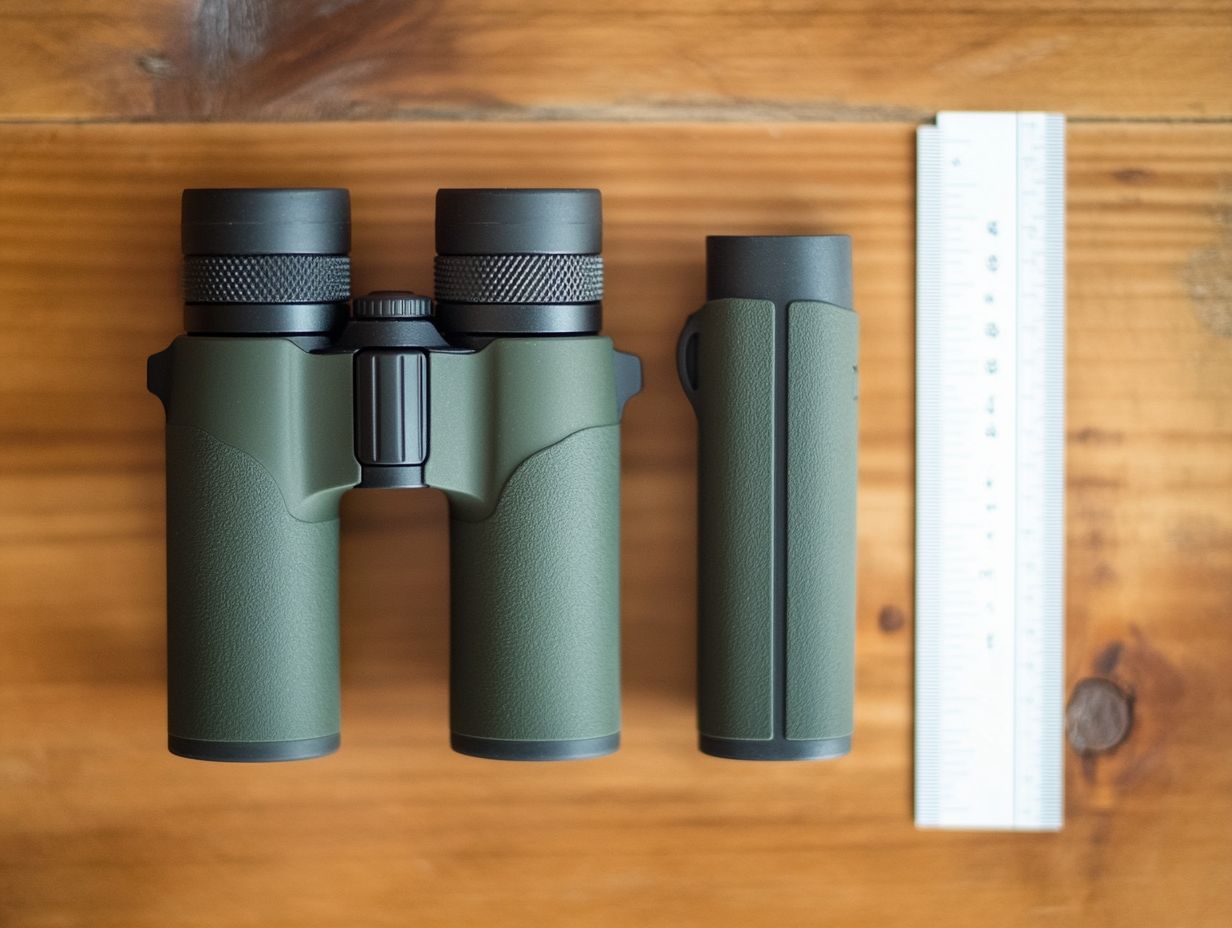
The Porro prism design boasts impressive advantages, including a wider field of view and an enhanced optical path. It does, however, come with a few drawbacks.
Among the benefits, you ll likely appreciate the superb binocular performance, delivering vivid detail and clarity across expansive landscapes. This design often features a focus knob that allows for quick and easy adjustments, making it user-friendly, even if you re just starting your binocular journey.
When facing challenging lighting conditions, these binoculars may not offer the best experience. They can struggle with glare and dimness, impacting overall usability.
Don’t miss out on the chance to enhance your outdoor experiences with the right binoculars! Imagine spotting a rare bird or witnessing an exciting sports moment clearly. The right binoculars can make all the difference!
Advantages and Disadvantages of Roof Prism Binoculars
Roof prism binoculars are highly regarded for their sleek, compact design and portability. They are an excellent choice for travel optics. However, you should know that they come with unique advantages and disadvantages that can significantly impact your overall experience and satisfaction.
Pros of Roof Prism Binoculars
The roof prism design offers several advantages, including a lightweight structure that makes them easy to handle and carry, especially during long outdoor adventures. Many models feature advanced coatings that enhance image clarity and reduce glare, resulting in clearer, brighter images.
Cons of Roof Prism Binoculars
However, it is essential to weigh the drawbacks. Roof prism binoculars often come with a higher price tag, which can be a sticking point for those on a budget. Additionally, achieving consistently sharp images may be challenging, especially with lower-priced options. You might need to invest in higher-quality optics to fully enjoy the benefits.
Key Differences Between Porro and Roof Prism Binoculars
The key differences between Porro and roof prism binoculars lie in their design features, which influence their optical performance, usability, and overall experience across different environments. Understanding the impact of prism type can enhance your binocular usage, whether you’re birdwatching or enjoying a concert.
Optical Performance and Design Features
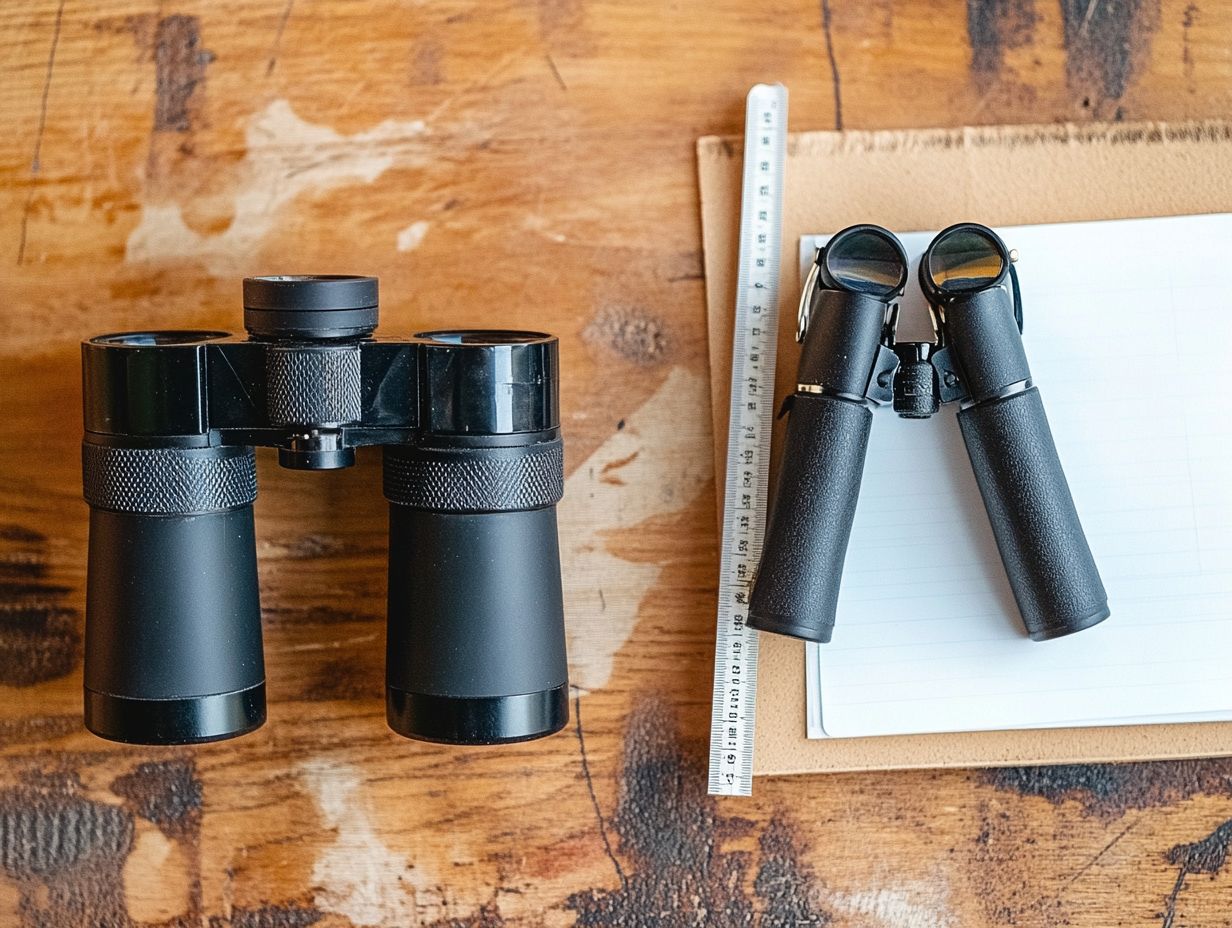
Optical performance and design features significantly influence the effectiveness of both Porro and roof prism binoculars, shaping your experience in terms of image clarity and light transmission capabilities.
Porro prisms, with their wider field of view, often provide brighter images due to their unique configuration that maximizes light entry. This design enhances depth perception and creates a more immersive viewing experience.
In contrast, roof prisms offer a more compact design, making them ideal for portability. However, they may occasionally sacrifice brightness or clarity, depending on their construction quality.
By examining these differences, you can gain a deeper appreciation for how each type of binocular affects your overall viewing pleasure, from sharpness in detail to vibrancy in color. This understanding will guide your choices in various outdoor adventures.
Choosing the Right Binoculars for Your Needs
Selecting the perfect binoculars requires thoughtful consideration of various factors. Reflect on your specific needs and preferences, as well as the image clarity you desire.
Think about the design that suits your activities best, whether you re traveling, birdwatching, or simply enjoying the great outdoors.
Factors to Consider in Making Your Decision
When deciding on binoculars, several factors come into play, including your intended use, the image clarity you desire, and the importance of a compact design for your travel needs.
Among these factors, size and weight are paramount, especially if you re into birdwatching or hiking. Portability can elevate your experience. Magnification (how much closer you can see an object) is equally important; while higher magnifications can provide stunning views of distant wildlife, they often demand a steady hand or a tripod to prevent frustrating shakes.
Your budget also plays a vital role, influencing the quality and features available, from lens coatings to build materials. By thoughtfully assessing these elements together, you can select the perfect pair tailored to your specific activities, ensuring a rewarding and practical experience.
Frequently Asked Questions
In this section, we will address common questions about choosing binoculars, their uses, and comparisons between types.
What are the main differences between Porro and Roof Prism binoculars?
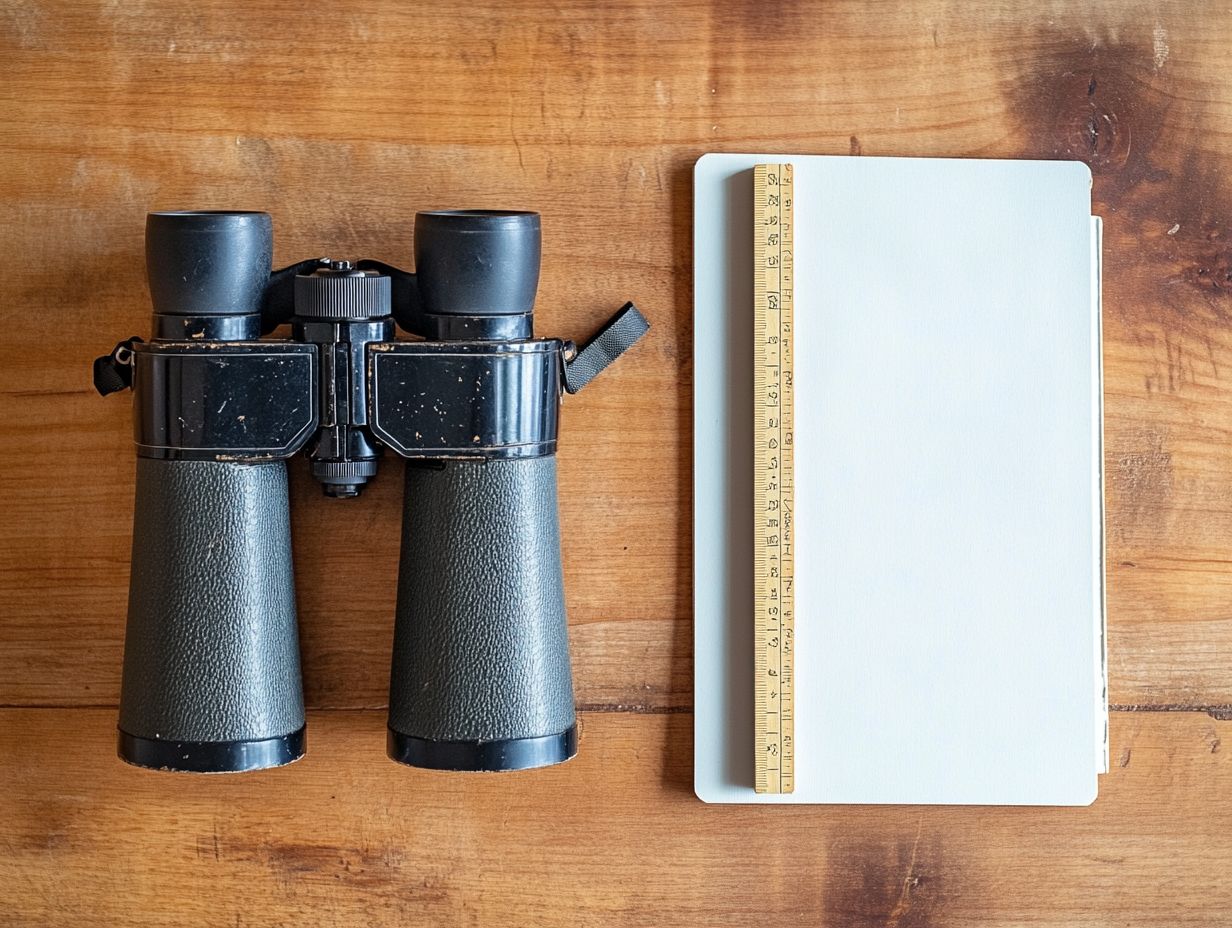
The main difference between Porro and Roof Prism binoculars lies in the way the prisms are arranged inside. Porro prism binoculars have a Z-shaped internal prism, while roof prism binoculars feature a straight prism design. This impacts the size, weight, and image quality of the binoculars.
Which type of binoculars is better for low light conditions, considering the optical path and light transmission?
Roof prism binoculars are generally better for low light conditions. Their prism design allows more light to pass through and reach your eyes. In contrast, Porro prism binoculars may deliver a dimmer image in low light due to increased reflections within the prism system.
Are Porro prism binoculars more affordable than Roof Prism binoculars?
Yes, Porro prism binoculars tend to be more affordable due to their simpler design and manufacturing process. This makes them popular for those seeking quality at a lower cost. However, high-end Porro models can be more expensive than entry-level Roof Prism options, especially those using BK-7 or BAK-4 prisms for superior image quality.
Which type of binoculars is better for long-distance viewing?
Both Porro and Roof Prism binoculars can be suitable for long-distance viewing. However, Roof Prism binoculars are often preferred for their compact and lightweight build. This design makes it easier to hold steady for extended periods, especially with models like the Celestron Yosemite or the Nikon Conquest HD, which are highly regarded in binocular reviews.
What are the advantages of Porro prism binoculars?
Porro prism binoculars provide a wider field of view and better depth perception compared to roof prism models, thanks to their unique design. They also typically have a more affordable price point and can be more durable due to their straightforward construction.
Which type of binoculars is better for bird watching?
Both Porro and Roof Prism binoculars can work well for bird watching. However, Roof Prism binoculars may have a slight edge due to their compact, lightweight design, ideal for outdoor enthusiasts in varying weather conditions. Still, some bird watchers appreciate the wider field of view and better depth perception offered by Porro prism binoculars, especially those designed for challenging light conditions.

